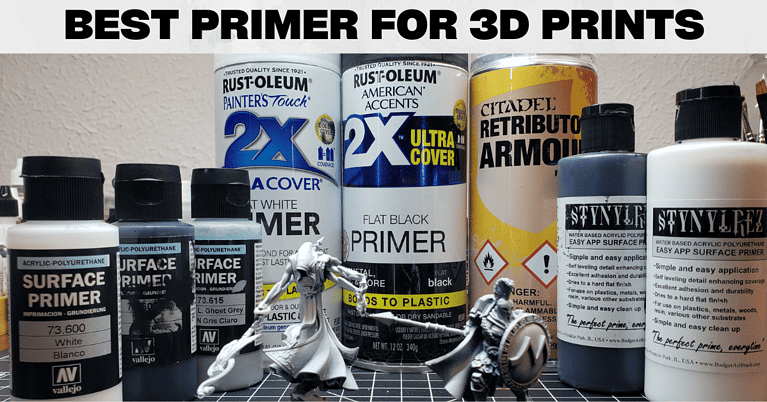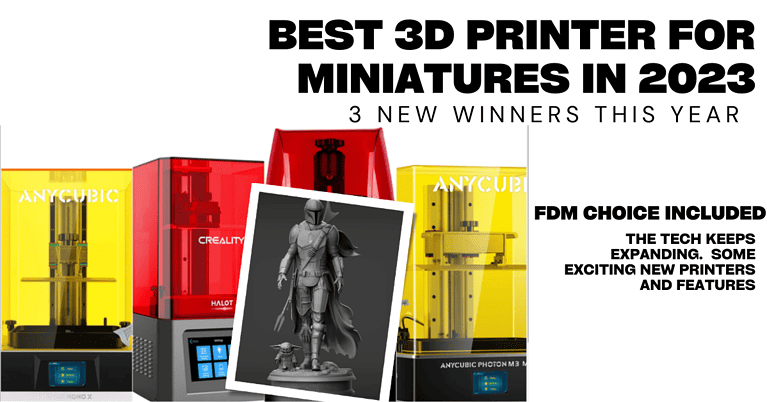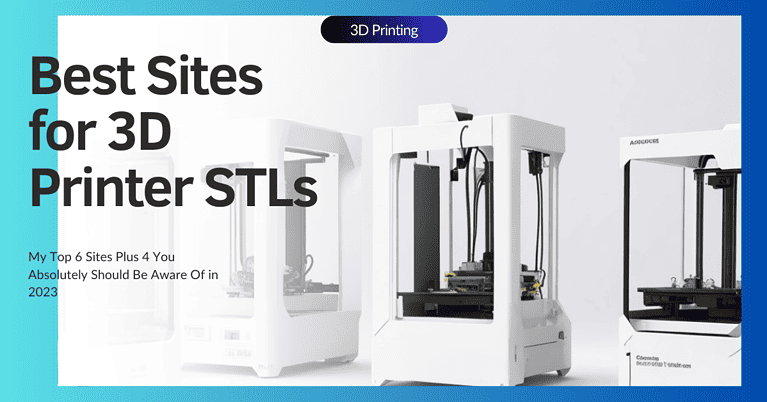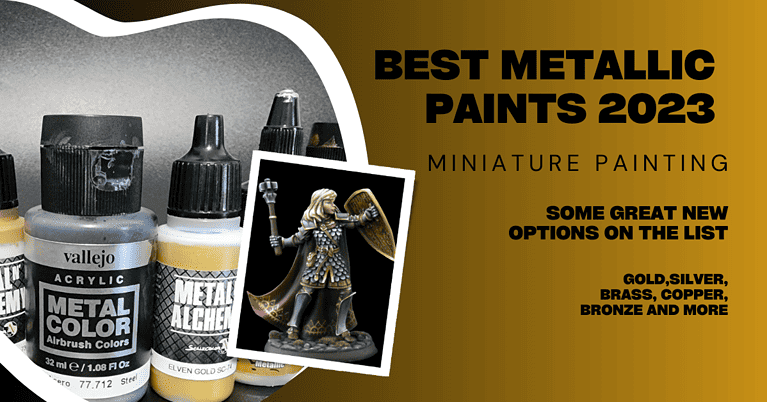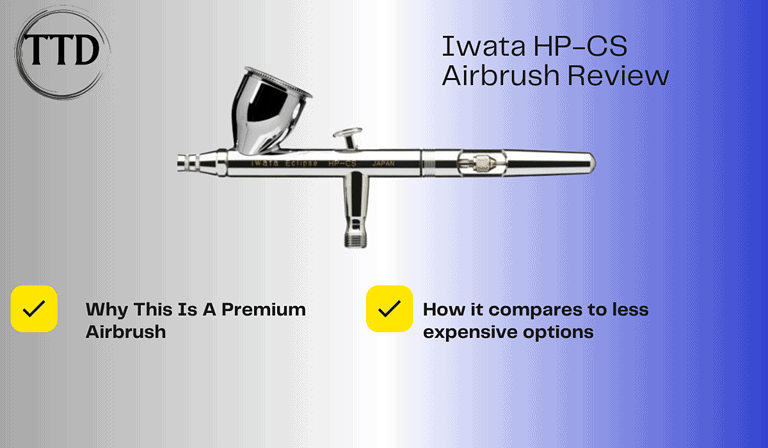What is a Resin 3D Printer and How Does it Work? (SLA DLP in 2023)
What is a Resin 3D Printer?
The two most common Resin 3D printers use either stereolithography (SLA) or digital light processing (DLP) technology. The two are similar, and generally speaking SLA is considered better for smaller prints, DLP is better for larger prints. Each version uses a vat of liquid resin. The resin is cured with using ultraviolet (UV) light or a similar light source. Each thin layer gets cured and stacked on top of each other, eventually forming the full printed item.
Not all 3D printers are the same. Traditional filament-based 3D printers, called FDM (Fused Deposition Modeling) printers, use melted plastic to create their prints. FDM is a very commonly used 3D printer, but they are very different from SLA resin 3D printing technology.
Personally speaking, I love resin printers for my miniatures. My Epax X1 was the first resin 3D printer I bought back in 2019. Having said that, there are some very, very cool new FDM printers coming out.
Fast, great features, and you don’t have to baby sit them like the cheaper FDM printers. I’ll be trying the newest ones and keep you informed.
That said, lets get back to the SLA 3d printer and how it works.
The SLA Resin process begins with a small tank of liquid resin, which get selectively cured (solidified) layer by layer to form a physical 3D object. This is achieved through a UV light source on an LCD screen that cures and hardens each layer one by one.
One of the key advantages of resin 3D printing is its ability to produce highly detailed and intricate objects with smooth surfaces.
This makes it very well suited for smaller, more detailed prints like jewelry, dental models, prototypes, and my favorite: Miniatures.
SLA is widely considered the best 3D Printer for miniatures because of the high detail it gives.
FDM printers are less detailed and tend to show layers more than resin prints.
Resins used in the prints can range from standard resins, flexible resins, transparent resins, and even specialty resins with unique properties like heat resistance or biocompatibility.
The downsides of a resin printer come down to the resin itself, which can be toxic and needs to be cleaned and fully cured after printing.
The other downside is that SLA resin printers tend to have smaller build volumes for the cost of the machine. Meaning you have less space to print your items.
For larger prints, you might have to break them up into components and print them separately, then assemble after printing.
Despite these considerations, the resin 3D printing process has opened up new possibilities in the world of 3D prints. Resin printing’s highly detailed, smooth, and complex results make it a popular choice among hobbyists.
How do SLA (stereolithography) Printers Work?
5 Steps to SLA 3D Resin Printing:
- Printer Files: You’ll need an STL file of the object you want printed. They can be created by you with 3D software or you can download existing files. The STL file goes into an app called a slicer that will process the file and feed the relevant information to the printer.
- Resin Vat: The SLA printer has a flat build platform on an arm capable of raising and lowering it. Under the build platform is a resin tank. The bottom of the resin tank is a lcd screen. The resin tank is filled with liquid photopolymer resin.
- Printing Process: The build platform is lowered into the resin tank, where it presses a thin layer of resin against the bottom of the tank. Under the tank is a UV light source. The first layer of the object that is being printed is then projected with UV light. That light shines up and hits the liquid resin pressed against the build plate. It cures a thin layer of resin, making it solid and it sticks to the build platform.
- Layer Stacking: After the first layer is solidified, the build platform is raises up and down inside the resin tank. Each time it rises and falls, the new layer of resin is pressed to the bottom, where the UV light shines the next pattern. This process is repeated a layer at a time until the entire object is printed.
- Cleaning and Curing: Once the printing is complete, the object is typically removed from the printer. It usually still has uncured resin on it at this stage. The print is rinsed and clean with isopropyl alcohol or a similar solvent to remove any excess resin. Finally, the print is cured under a UV light or in the sunlight to fully harden.
How does DLP 3D printing work?
DLP is a very similar 3D printing technology. Most resin 3d printing works the same way. The main difference is how the DLP 3D printer cures the resin.
Here are the 5 steps to DLP 3D Resin Printing:
- Printer Files: You’ll need an STL file of the object you want printed. They can be created by you with 3D software or you can download existing files. The STL file goes into an app called a slicer that will process the file and feed the relevant information to the printer.
- Resin Vat: The SLA printer has a flat build platform on an arm capable of raising and lowering it. Under the build platform is a resin tank. The resin tank is filled with liquid photopolymer resin.
- Printing Process: The build platform is lowered into the resin tank, where it presses a thin layer of liquid resin against the bottom of the tank. DLP printers use a digital micromirror device (DMD) or similar technology. The DMD is an array of tiny mirrors that can tilt and direct light. The projected layer image is formed by reflecting UV light off the DMD, which selectively exposes the resin to specific areas, causing the resin to cure.
- Layer Stacking: After the first layer is solidified, the build platform is raises up and down inside the resin tank. Each time it rises and falls, the new layer of resin is pressed to the bottom, where the DMD shines the next UV light pattern. This process is repeated a layer at a time until the entire object is printed.
- Cleaning and Curing: Once the printing is complete, the object is typically removed from the printer. It usually still has uncured resin on it at this stage. The print is rinsed and clean with isopropyl alcohol or a similar solvent to remove any excess resin. Finally, the print is cured under a UV light or in the sunlight to fully harden.
What Materials Can Be Used in Resin 3D Printing?
In tabletop gaming and miniature painting, we typically stick to standard resins. Sometimes a flexible or transparent can be used as well. I have seen some creators use castable resins, but havent tried that myself!
I wanted to go through all the types of resins quickly for everyone here:
- Standard Resins: Standard resins, also known as general-purpose resins, are versatile and widely used for a variety of applications. They typically offer a good balance between strength, durability, and surface finish.
- Flexible Resins: Flexible resins are specially formulated to produce a rubber like part. There is a range of these that can cost anywhere from $25 to $200 or more. Other than cost, the amount of flex and strength varies.
- Transparent Resins: Transparent or clear resins are designed to create clear prints. They allow light to pass through, making them suitable for lenses, light guides, and transparent miniatures.
- High-Temperature Resins: High-temperature resins can take elevated temperatures without significant deformation. This has some obvious uses for items that need to be near heat sources.
- Biocompatible Resins: These are medical grade resins deemed safe for human use. They are used in the production of dental models, hearing aids, mouth guards and similar items.
- Castable Resins: Castable resins are designed for creating intricate patterns that can be used in investment casting processes. These resins burn out cleanly during the casting process, turning into a gas. This leaves behind a void that is filled with molten metal or other materials.
I have the most experience with SLA 3D printing, with standard resin. In general that seems the most popular combination for any hobby related miniature printing. So if you’re looking for a 3D printer for miniatures, resin printers work well.

